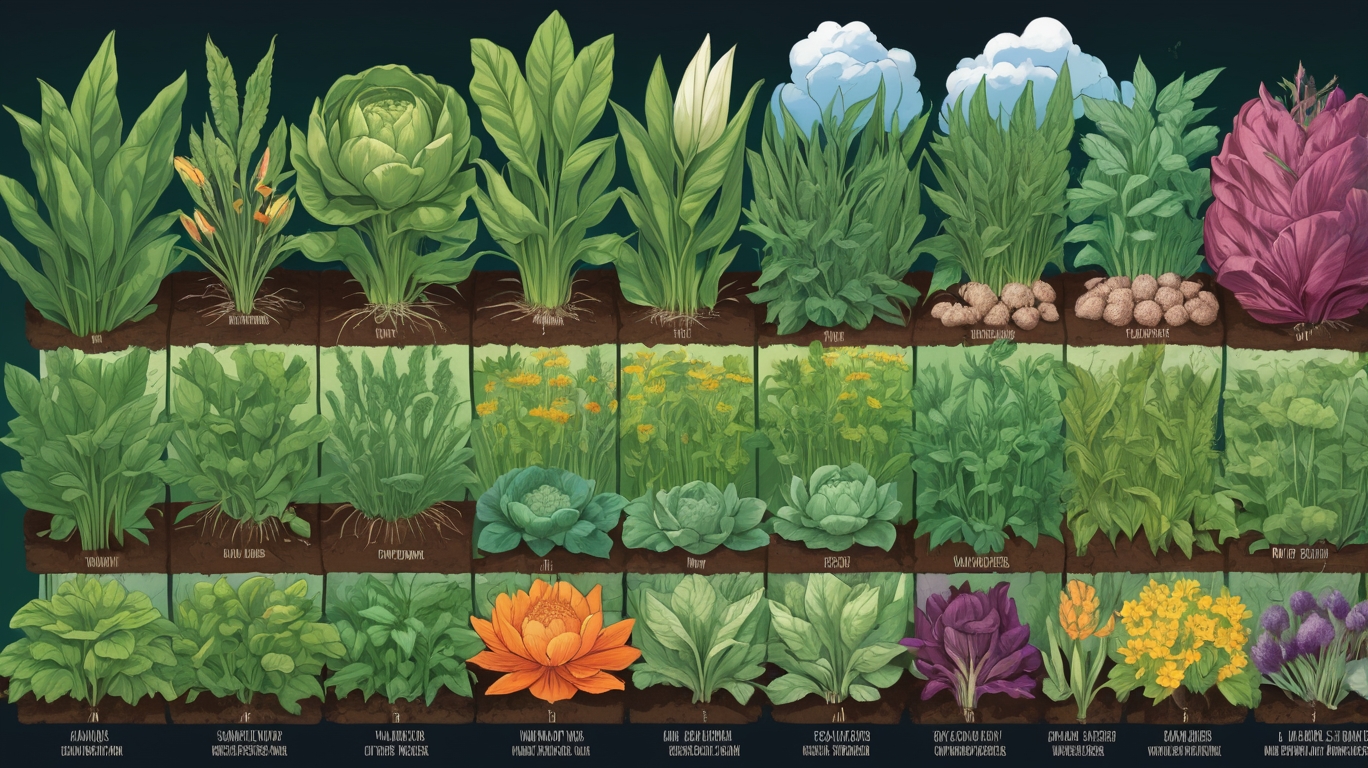Best Crops for Different Climate Zones: A Guide to Harmonious Gardening
Gardening is a peaceful and rewarding endeavor, but choosing the right crops for your climate can make all the difference. Whether you live in a cool temperate region, a hot arid zone, or a humid tropical area, selecting plants that naturally thrive in your environment leads to healthier growth, less maintenance, and a more bountiful harvest.
In this guide, we’ll explore the best crops for different climate zones, helping you cultivate a garden that flourishes with minimal stress—for both you and your plants.

1. Cool Temperate Climates (Cold winters, mild summers – e.g., Northern U.S., Canada, Northern Europe)
Cool temperate regions experience distinct seasons, with frosty winters and moderate summers. The key here is to grow crops that can withstand cold snaps or thrive in shorter growing seasons.
Best Crops:
- Leafy Greens (Kale, Spinach, Lettuce) – Hardy and fast-growing.
- Root Vegetables (Carrots, Beets, Potatoes) – Tolerate cool soil well.
- Brassicas (Broccoli, Cabbage, Brussels Sprouts) – Prefer cooler temperatures.
- Peas & Broad Beans – Thrive in early spring and fall.
- Berries (Strawberries, Raspberries) – Cold-hardy and productive.
Tip: Use row covers or cold frames to extend the growing season.
2. Mediterranean Climates (Warm, dry summers; mild, wet winters – e.g., California, Southern Europe, Australia’s southern coast)
These regions enjoy long, sunny growing seasons with limited rainfall in summer. Drought-resistant crops and those that mature before peak heat are ideal.
Best Crops:
- Olives & Grapes – Classic Mediterranean staples.
- Tomatoes & Peppers – Love the long, warm growing season.
- Herbs (Rosemary, Thyme, Lavender) – Naturally drought-tolerant.
- Citrus Fruits (Lemons, Oranges) – Thrive in mild winters.
- Figs & Pomegranates – Well-suited to dry summers.
Tip: Mulch heavily to retain soil moisture and reduce watering needs.
3. Arid & Desert Climates (Hot days, cool nights, very low rainfall – e.g., Arizona, Sahara, Middle East)
Gardening in arid zones requires heat-loving, drought-resistant plants. Efficient water use is key.
Best Crops:
- Agave & Aloe – Excellent for xeriscaping.
- Dates & Figs – Naturally adapted to dry heat.
- Okra & Eggplant – Thrive in high temperatures.
- Melons (Watermelon, Cantaloupe) – Deep roots help them access water.
- Quinoa & Amaranth – Ancient grains that handle drought well.
Tip: Drip irrigation and shade cloth can help conserve water and protect plants from scorching sun.
4. Tropical & Subtropical Climates (Warm year-round, high humidity, heavy rainfall – e.g., Southeast Asia, Florida, Amazon Basin)
In these lush environments, heat and moisture support rapid growth, but fungal diseases can be a challenge.
Best Crops:
- Bananas & Papayas – Fast-growing and prolific.
- Sweet Potatoes & Taro – Love the heat and humidity.
- Pineapples & Mangoes – Thrive in consistent warmth.
- Cassava & Yams – Staple crops in tropical regions.
- Herbs (Lemongrass, Ginger, Turmeric) – Naturally pest-resistant.
Tip: Ensure good drainage and airflow to prevent fungal issues.
5. Continental Climates (Hot summers, very cold winters – e.g., Midwest U.S., Central Asia, Eastern Europe)
These regions have extreme seasonal shifts, so quick-growing summer crops and cold-hardy varieties are essential.
Best Crops:
- Corn & Soybeans – Common staples in these zones.
- Squash & Pumpkins – Grow well in warm summers.
- Apples & Cherries – Tolerate cold winters.
- Wheat & Barley – Hardy grains for variable climates.
- Sunflowers – Adaptable and resilient.
Tip: Plant in raised beds to help with temperature regulation and drainage.
Final Thoughts: Work with Nature, Not Against It
Every climate has its unique advantages and challenges. By choosing crops that naturally align with your region’s conditions, you create a more sustainable and low-maintenance garden. Observe local ecosystems, talk to nearby growers, and experiment to find what works best in your space.
Happy gardening—may your harvests be plentiful and your efforts peaceful. 🌱